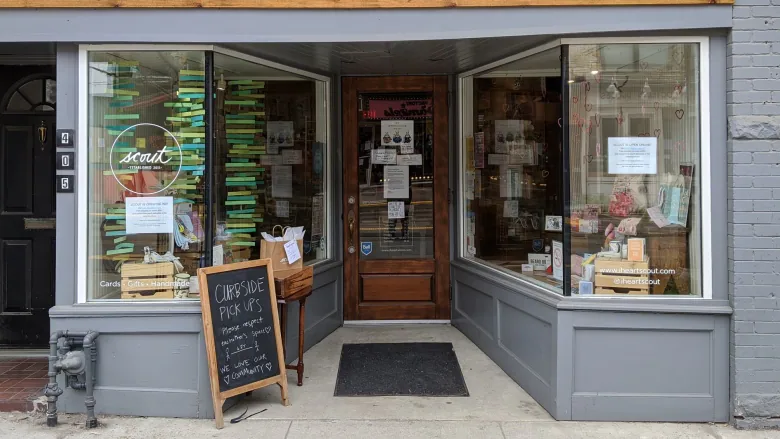
How Brick & Mortar Businesses Can Attract More Shoppers In Store
Originally published April 5th, 2022
As Spring is finally here, people are going to be heading outside much more often, especially after the last several years. With increased foot traffic outdoors, retailers should be looking for ways to bring some of that foot traffic into their own stores. If you are a retailer, you may be wondering: “How can I attract more local shoppers?” Well, in this article, we’ll go through how brick & mortar businesses can attract more shoppers.

Exciting in-store experiences to attract more shoppers in store
In-store experiences have definitely become more common. People today are always looking to participate in new experiences. Here are some ideas for interesting experiences you can curate for your consumers:
1. Photo ops
Set aside a small space in your store (or even outside your store) where customers can take photos and share their visit on social media. This space should get customers excited. Some ideas include: a chalkboard with some unique art related to your business, a custom neon sign, or even an installation of some beautiful plants along with some decoration. Get creative here, and allow your brand to shine through. Don’t forget to put up photos of other shots for ideas.

The pictures your customers take will end up advertising your store for free through the customers’ social media posts. It also creates a positive association between your brand and the consumer.
Reminder: Offer a small incentive to get shoppers to tag you in their posts. Tagging is important to increase visitors to your social media accounts.
2. In-store events
Another way brick & mortar shops can attract more shoppers is through exciting events in store. By events, we don’t mean things like sales and promotions. Although those can be effective, we recommend running events such as: lessons/classes in something related to your business, having an expert in your industry come in and host a seminar, or the reveal of a new product line.

Make sure that the event you are hosting provides value to your business. The event should be related to the industry your business is in, but not something you already offer in some way.
For example, a vacuum shop could host a seminar on how to go about spring cleaning. The vacuum store doesn’t offer spring cleaning services, but people who are planning their spring cleaning will most definitely be using vacuum cleaners. So offering them a guide on how to effectively go about the cleaning will give them an added benefit and encourage the purchase of a new vacuum.

Even if they don’t end up purchasing a vacuum, this event will still bring them into the store, but more importantly the event will allow the customer to perceive your brand as the expert on cleaning. Now they will be more likely to think of your store when considering their next vacuum purchase.
3. Partner with others to host pop-in shops
Another way to increase foot traffic in your store is to host pop-in shops for other businesses. This works best when the other businesses are related but not directly competitive to yours. Simply designate a spot in your store to host another small business’s pop-up stop to offer items that help sell your own products. For example, a bakery shop could host a pop-up shop for a small artisan jelly business or a coffee shop could host a pop-up donuts business.

Attract more customers in store through low cost merchandising tactics
Retail merchandising is key to creating a positive customer experience. A strong merchandising strategy brings the products to your customer rather than the other way around. Here are some modern merchandising tactics your business can use to engage your customers.
1. Storefront Window Display QR codes
A cost efficient way to attract more customers in your store is to use QR codes in your window display. This allows them to be accessible to everyone passing by. These QR codes allow anyone with a mobile device to easily learn more about your products, even when your store is closed.

QR codes are easily changeable which allows you to regularly update them every time you change your window display.
INSTRUCTIONS ON HOW TO PRINT FREE QR CODES
2. Helpful cross-selling signs
A way to modernize your store merchandising strategy is to use signs to cross-sell other products. Most in-store signs today take up space but only promote one specific product. Adding cross-selling signs allows you to use the same amount of space but promote multiple products at once. Simply merchandise products together that are known to be bought together and create a sign that presents that to your customers.
Adding signs that say “Buy this if you like this” or “This goes great with this” is simple, but it’s enough to draw attention to other products.
3. Highlight your Google profile & Google Reviews
Another way brick & mortar shops can attract more local shoppers is to highlight popularity and your Google reviews. Google prioritizes local businesses when nearby shoppers search online. Make sure that your Google store listing has accurate information including your address, store hours, etc. A good omnichannel system will be able to easily manage this information for you.
Highly engaged reviews are important for new customers that have never visited your store. A sign at the front of your store stating “ Google best seller” or a good quote from a Google review would attract new customers into your store. Some ideas include:
- Printing out users’ reviews and placing them near the product
- Placing a sign at the front of your store with the products that are gaining the most recognition on Google
- Putting up a sign that offers an incentive for shoppers to leave reviews

Omnichannel to attract more shoppers
Retail stores that sell in-store and online use omnichannel software to easily turn online visits into bigger in-store sales. Omnichannel software is what allows retailers to offer real-time inventory and BOPIS (Buy Online, Pickup In-Store or what is sometimes called Click & Collect) to customers without any manual work. With the right system, customers can place orders online and pick up in stores when the same system notifies them that the products are ready.
1. Real-time stock availability
Showing real-time store stock levels online allows customers to see real time stock availability so they won’t be disappointed when they get to the store. A positive shopping experience encourages returning customers. Using a tool such as TAKU’s built-in integration to Google or to your own online store lets you easily showcase your available store products online without any effort.

2. Buy online pickup instore (BOPIS)
Customers love to shop online but don’t love the shipping costs or the amount of packing materials used to send products out. By allowing them to pick up their order in store it solves their problem while also creating an opportunity for your business to upsell, lower merchant processing fees and reduce return rates.

BOPIS reduces the friction between your online store and your in store experience for happier shoppers. And using the right all-in-one technology will increase sales while reducing the operational costs of fulfilling from the store.
Attract more customers by offering In-Store Exclusives
In-store exclusives are a great way to attract more nearby shoppers. Local customers are willing to shop in person instead of online if there’s a strong value-add. You can give your customers this reason by offering in-store only exclusives. Here are a few in-store exclusives you can offer:
In-store only promotions/deals
You can create an exclusive feeling for your in-store shoppers by implementing promotions and discounts offered only with an in-store purchase. This is where your store can offer any promotion or deals worth sharing. Some examples include:
- Offering some products only in store
- Grouping bundles of your products and selling them as a combo
- Giving coupons that can only be redeemed in your retail locations

Creating a seamless shopping experience for your store has never been easier with TAKU. Besides running all of your in-store and online sales in one system, our built-in free Google listings allow you to easily advertise your real stock availability to nearby customers. TAKU Retail can also help you easily integrate BOPIS into your business. If you want to learn more about it, click the button below for a free demo.







